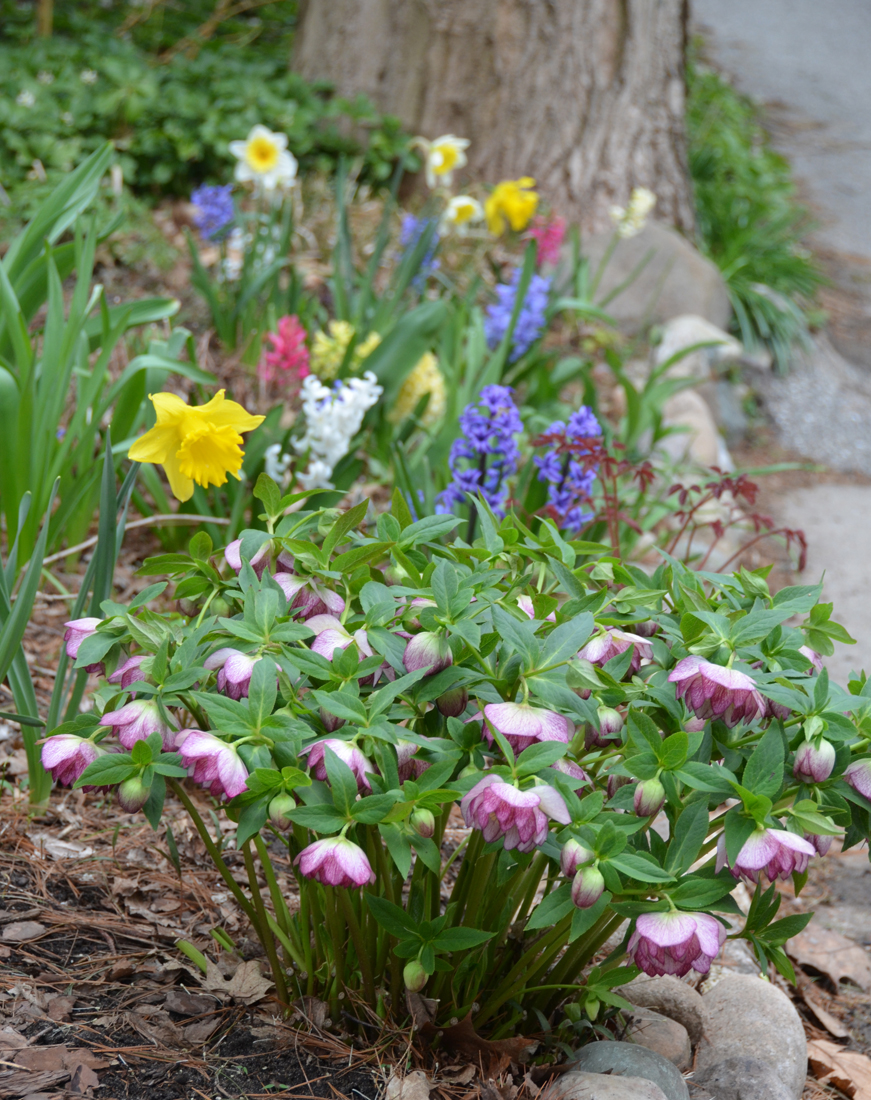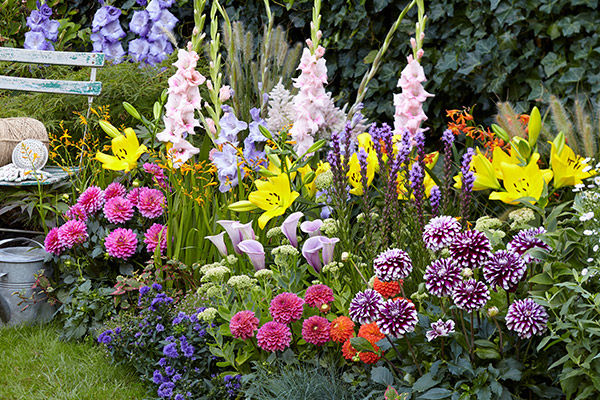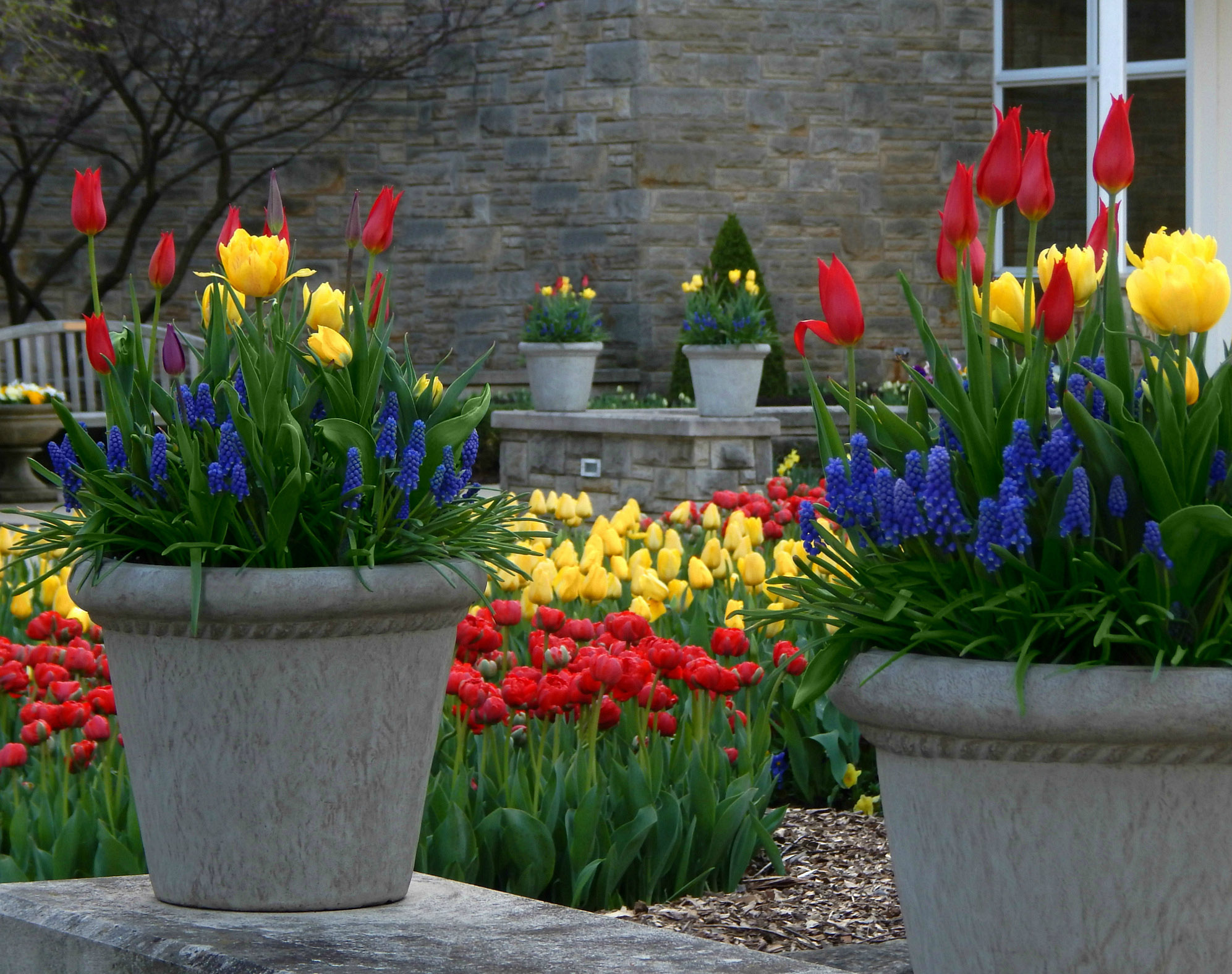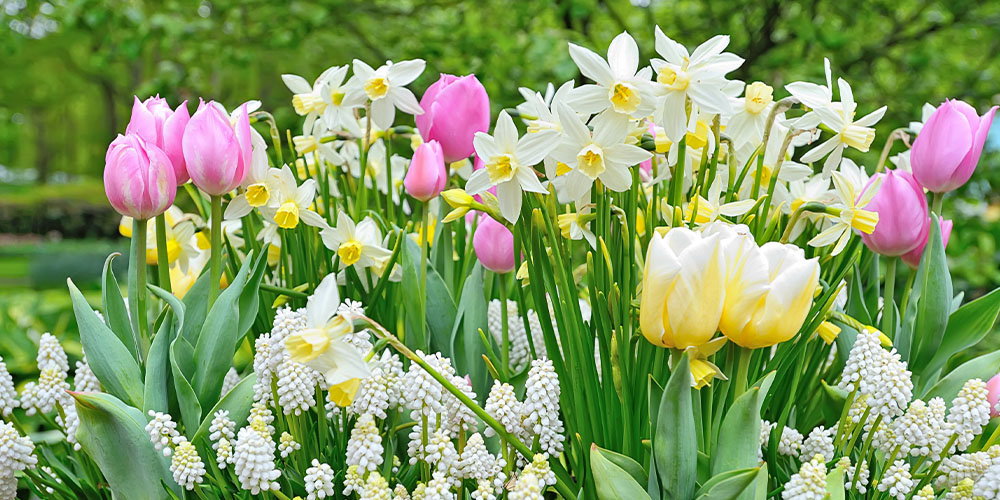Why Companion Planting Matters for Spring Bulbs
Companion planting is a simple yet effective way to enhance the beauty and health of spring bulb gardens. By choosing the right companions, gardeners can improve growth, increase bloom time, and create a stunning display of color and texture. But that’s not all – companion planting can also help to deter pests and diseases, and even improve soil health.
When it comes to spring bulbs, companion planting is especially important. These bulbs are often planted in the fall, and then left to their own devices until they bloom in the spring. By adding companions to the garden, gardeners can create a more dynamic and interesting display, and also help to support the health and well-being of the bulbs.
So, what makes a good companion plant for spring bulbs? Look for plants that have similar growing conditions and space requirements. For example, if you’re planting tulips, which prefer well-draining soil and full sun, choose companions that also thrive in these conditions. Some good options might include perennials like hostas or daylilies, which are low-maintenance and can help to suppress weeds.
Another benefit of companion planting is that it can help to attract beneficial insects to the garden. For example, planting marigolds or nasturtiums with spring bulbs can help to attract bees and other pollinators, which can improve the overall health and fertility of the garden.
Of course, not all companion plants are created equal. Some plants, like garlic or chives, have natural pest-repelling properties that can help to keep aphids and other pests away from spring bulbs. Others, like comfrey or borage, have deep taproots that can help to bring up nutrients from the subsoil, making them available to the bulbs.
By incorporating companion plants into your spring bulb garden, you can create a more diverse and resilient ecosystem that will thrive for years to come. And with a little creativity and experimentation, you can find the perfect companions to enhance the beauty and health of your spring bulbs.
Choosing the Right Companions for Your Spring Bulbs
When it comes to selecting companions for your spring bulbs, there are several options to consider. Perennials, annuals, and groundcovers can all be used to create a beautiful and thriving garden. The key is to choose companions that have similar growing conditions and space requirements as your spring bulbs.
Perennials are a great option for companion planting with spring bulbs. They come back year after year, and can provide a beautiful backdrop for your bulbs. Some popular perennial options for companion planting include hostas, daylilies, and coral bells. These plants are low-maintenance and can thrive in a variety of conditions.
Annuals can also be used as companions for spring bulbs. They can add a burst of color and texture to the garden, and can be easily replaced each year. Some popular annual options for companion planting include pansies, violas, and snapdragons. These plants are easy to care for and can thrive in a variety of conditions.
Groundcovers are another option for companion planting with spring bulbs. They can help to suppress weeds and retain moisture in the soil, making them a great choice for busy gardeners. Some popular groundcover options for companion planting include creeping thyme and sweet woodruff. These plants are low-maintenance and can thrive in a variety of conditions.
When selecting companions for your spring bulbs, be sure to consider their growing conditions and space requirements. Make sure to choose companions that have similar needs to your bulbs, and that won’t compete with them for water and nutrients. By choosing the right companions, you can create a beautiful and thriving garden that will come back year after year.
Some other factors to consider when selecting companions for your spring bulbs include their bloom time and color. Choose companions that will bloom at the same time as your bulbs, and that will complement their color. This will create a beautiful and cohesive look in the garden.
By incorporating a variety of companions into your spring bulb garden, you can create a beautiful and thriving garden that will provide interest and color throughout the growing season. Whether you choose perennials, annuals, or groundcovers, be sure to select companions that will complement your bulbs and provide a beautiful display of color and texture.
Perennials that Pair Perfectly with Spring Bulbs
When it comes to choosing perennials to pair with spring bulbs, there are many options to consider. Some popular perennial options that complement spring bulbs include hostas, daylilies, and coral bells. These plants are low-maintenance and can thrive in a variety of conditions, making them perfect for busy gardeners.
Hostas are a great option for pairing with spring bulbs. They have beautiful foliage and can provide a stunning backdrop for bulbs like tulips and daffodils. They also come in a range of sizes, from small to large, making them versatile for any garden. To plant hostas, simply dig a hole that is twice as wide and just as deep as the root ball. Add some organic matter like compost or manure to the soil, and then plant the hosta at the same depth as it was in the pot.
Daylilies are another popular perennial option for pairing with spring bulbs. They have beautiful flowers and can provide a burst of color in the garden. They are also low-maintenance and can thrive in a variety of conditions. To plant daylilies, simply dig a hole that is twice as wide and just as deep as the root ball. Add some organic matter like compost or manure to the soil, and then plant the daylily at the same depth as it was in the pot.
Coral bells are a great option for adding a pop of color to the garden. They have beautiful foliage and can provide a stunning backdrop for bulbs like tulips and daffodils. They are also low-maintenance and can thrive in a variety of conditions. To plant coral bells, simply dig a hole that is twice as wide and just as deep as the root ball. Add some organic matter like compost or manure to the soil, and then plant the coral bells at the same depth as they were in the pot.
When pairing perennials with spring bulbs, it’s essential to consider their growing conditions and space requirements. Make sure to choose perennials that have similar needs to your bulbs, and that won’t compete with them for water and nutrients. By choosing the right perennials, you can create a beautiful and thriving garden that will come back year after year.
Some other tips for planting perennials with spring bulbs include planting them at the same time as the bulbs, and making sure to water them well after planting. This will help to establish a strong root system and ensure that the perennials thrive. By following these tips, you can create a stunning and thriving garden that will provide interest and color throughout the growing season.
Annuals that Add a Pop of Color to Spring Bulb Gardens
Annuals are a great way to add a burst of color and texture to spring bulb gardens. They can be planted in the same bed as the bulbs, and can provide a beautiful contrast to the bulbs’ flowers. Some popular annual options that pair well with spring bulbs include pansies, violas, and snapdragons.
Pansies are a great choice for adding a pop of color to spring bulb gardens. They come in a range of colors, including pink, purple, yellow, and white, and can thrive in a variety of conditions. They are also low-maintenance and can be easily deadheaded to encourage more blooms.
Violas are another popular annual option for spring bulb gardens. They have delicate, fragrant flowers and can thrive in partial shade to full sun. They are also low-maintenance and can be easily divided and transplanted to other areas of the garden.
Snapdragons are a great choice for adding a dramatic pop of color to spring bulb gardens. They have tall, colorful spikes of flowers and can thrive in full sun to partial shade. They are also low-maintenance and can be easily staked to prevent them from toppling over in the wind.
When incorporating annuals into spring bulb gardens, it’s essential to consider their growing conditions and space requirements. Make sure to choose annuals that have similar needs to your bulbs, and that won’t compete with them for water and nutrients. By choosing the right annuals, you can create a beautiful and thriving garden that will provide interest and color throughout the growing season.
Some other tips for planting annuals with spring bulbs include planting them at the same time as the bulbs, and making sure to water them well after planting. This will help to establish a strong root system and ensure that the annuals thrive. By following these tips, you can create a stunning and thriving garden that will provide a beautiful display of color and texture.
When deciding what to plant with spring bulbs, consider the color and texture of the annuals and how they will complement the bulbs. For example, if you’re planting tulips, which have cup-shaped flowers, consider planting annuals with delicate, fragrant flowers like violas or pansies. This will create a beautiful contrast and add depth and interest to the garden.
Groundcovers that Suppress Weeds and Retain Moisture
Groundcovers are a great option for spring bulb gardens, as they can help to suppress weeds and retain moisture in the soil. This can be especially beneficial for bulbs, which can be sensitive to competition from weeds and can benefit from consistent moisture levels. Some popular groundcover options for spring bulb gardens include creeping thyme and sweet woodruff.
Creeping thyme is a low-maintenance groundcover that can thrive in a variety of conditions. It has tiny, fragrant leaves and can produce small, pinkish-purple flowers in the summer. It is also drought-tolerant and can help to suppress weeds, making it a great option for busy gardeners.
Sweet woodruff is another popular groundcover option for spring bulb gardens. It has delicate, white flowers in the spring and can thrive in partial shade to full sun. It is also low-maintenance and can help to retain moisture in the soil, making it a great option for gardens with poor soil.
When selecting groundcovers for your spring bulb garden, consider their growing conditions and space requirements. Make sure to choose groundcovers that have similar needs to your bulbs, and that won’t compete with them for water and nutrients. By choosing the right groundcovers, you can create a beautiful and thriving garden that will provide interest and color throughout the growing season.
Some other tips for planting groundcovers with spring bulbs include planting them at the same time as the bulbs, and making sure to water them well after planting. This will help to establish a strong root system and ensure that the groundcovers thrive. By following these tips, you can create a stunning and thriving garden that will provide a beautiful display of color and texture.
When deciding what to plant with spring bulbs, consider the benefits of using groundcovers. They can help to suppress weeds, retain moisture, and add a beautiful layer of texture and color to the garden. By incorporating groundcovers into your spring bulb garden, you can create a beautiful and thriving garden that will provide interest and color throughout the growing season.
How to Plant a Beautiful Spring Bulb Garden
Planting a beautiful spring bulb garden requires some planning and preparation, but with the right steps, you can create a stunning display of color and texture. Here’s a step-by-step guide on how to plant a spring bulb garden:
Step 1: Prepare the Soil
Before planting your spring bulbs, it’s essential to prepare the soil. Start by loosening the soil to a depth of about 12 inches. Add a 2-inch layer of compost or well-rotted manure to the soil to improve its fertility and drainage.
Step 2: Select the Right Bulbs
Choose a variety of spring bulbs that will bloom at different times to create a continuous display of color. Consider the height, spread, and bloom time of each bulb when selecting. Some popular spring bulbs include tulips, daffodils, and hyacinths.
Step 3: Plant the Bulbs
Plant the bulbs at the right depth, which is usually 2-3 times the height of the bulb. For example, if the bulb is 2 inches tall, plant it 4-6 inches deep. Space the bulbs 3-6 inches apart, depending on the variety.
Step 4: Water and Mulch
Water the bulbs well after planting and apply a 2-inch layer of mulch to retain moisture and suppress weeds. Keep the soil consistently moist during the growing season.
Step 5: Care for the Garden
After planting, keep the garden consistently watered and fertilized. Deadhead the flowers as they fade to encourage more blooms. Divide and replant the bulbs every 3-4 years to maintain their vigor.
Some other tips for planting a beautiful spring bulb garden include:
Planting the bulbs in the fall, about 6-8 weeks before the first frost.
Using a bulb planter or trowel to plant the bulbs at the right depth.
Adding a layer of compost or well-rotted manure to the soil to improve its fertility and drainage.
Watering the bulbs well after planting and keeping the soil consistently moist during the growing season.
By following these steps and tips, you can create a beautiful and thriving spring bulb garden that will provide a stunning display of color and texture.
Tips for Maintaining a Healthy and Thriving Spring Bulb Garden
Maintaining a healthy and thriving spring bulb garden requires regular care and attention. Here are some tips to help you keep your garden looking its best:
Deadheading: Remove spent flowers to encourage more blooms and prevent seed production. This will also help to maintain the garden’s appearance and promote healthy growth.
Fertilizing: Feed your spring bulbs with a balanced fertilizer in the spring when they are actively growing. Avoid over-fertilizing, as this can damage the bulbs and lead to weak growth.
Dividing: Divide and replant your spring bulbs every 3-4 years to maintain their vigor and promote healthy growth. This will also help to prevent overcrowding and reduce the risk of disease.
Monitoring for Pests and Diseases: Keep an eye out for pests and diseases that can damage your spring bulbs, such as aphids, slugs, and snails. Take action promptly if you notice any problems, and use organic or chemical controls as needed.
Watering: Water your spring bulbs regularly during the growing season, but avoid overwatering. Make sure the soil is moist but not waterlogged, as this can lead to rot and other problems.
Mulching: Mulch around your spring bulbs to retain moisture, suppress weeds, and regulate soil temperature. Use a thin layer of organic mulch, such as straw or bark chips, and keep it a few inches away from the bulbs.
Some other tips for maintaining a healthy and thriving spring bulb garden include:
Providing enough sunlight: Make sure your spring bulbs are getting enough sunlight, as this is essential for healthy growth and blooming.
Using the right soil: Use a well-draining soil that is rich in organic matter, as this will help to promote healthy growth and prevent problems.
Avoiding over-crowding: Make sure to leave enough space between your spring bulbs, as overcrowding can lead to disease and other problems.
By following these tips, you can maintain a healthy and thriving spring bulb garden that will provide a beautiful display of color and texture for years to come.
Common Mistakes to Avoid When Planting Spring Bulbs
When planting spring bulbs, there are several common mistakes to avoid in order to ensure a successful garden. Here are some of the most common mistakes to watch out for:
Planting too deeply: Planting spring bulbs too deeply can cause them to rot or fail to bloom. Make sure to plant them at the right depth, which is usually 2-3 times the height of the bulb.
Not providing enough sunlight: Spring bulbs need sunlight to bloom, so make sure to plant them in a location that receives at least 6 hours of direct sunlight per day.
Not watering properly: Spring bulbs need consistent moisture to bloom, but overwatering can cause them to rot. Make sure to water them regularly, but avoid overwatering.
Not fertilizing: Spring bulbs need fertilizer to bloom, so make sure to fertilize them regularly. Use a balanced fertilizer that is high in phosphorus to promote blooming.
Not deadheading: Deadheading is the process of removing spent flowers to encourage more blooms. Make sure to deadhead your spring bulbs regularly to promote more blooms.
Some other common mistakes to avoid when planting spring bulbs include:
Planting in poorly draining soil: Spring bulbs don’t like wet feet, so make sure to plant them in well-draining soil.
Not dividing and replanting: Spring bulbs need to be divided and replanted every 3-4 years to maintain their vigor and promote healthy growth.
Not monitoring for pests and diseases: Keep an eye out for pests and diseases that can damage your spring bulbs, such as aphids, slugs, and snails.
By avoiding these common mistakes, you can ensure a successful and thriving spring bulb garden that will provide a beautiful display of color and texture for years to come.








